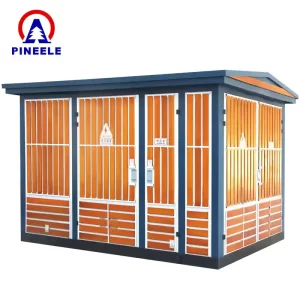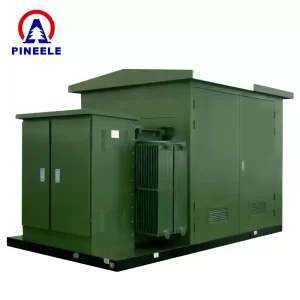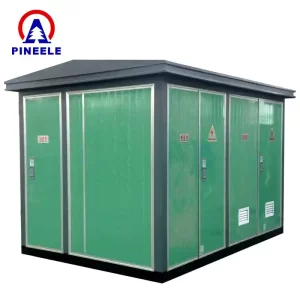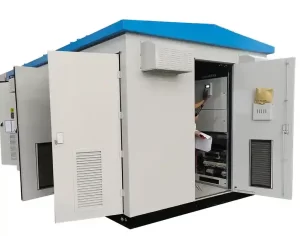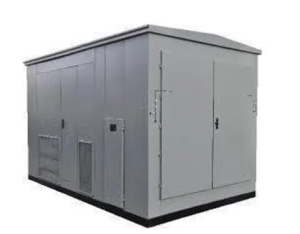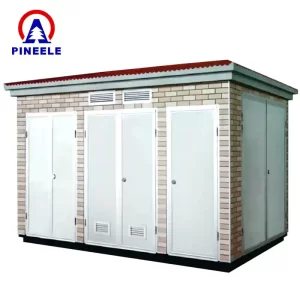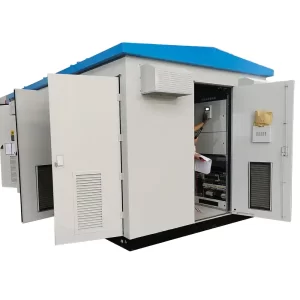Johdanto
مع توسيع البنية التحتية الحضرية وتتطلب الصناعات أنظمة طاقة أكثر إحكاما وموثوقة ،فرط مضغوط 500 كيلو فولت أمبيرظهر كحل مفضل لتحويل الجهد المتوسط إلى المنخفض. محول التوزيعومفاتيح الجهد المتوسطة، ولوحة الجهد المنخفضفي وحدة واحدة مصنوعة من المصنع.
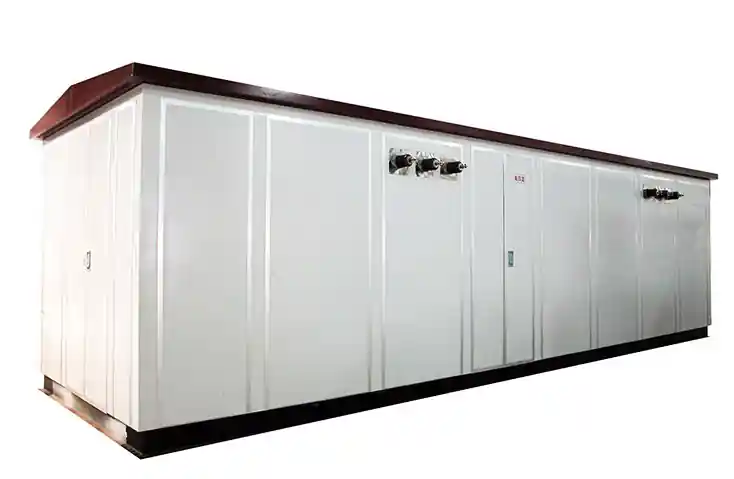
ما الذي يجعل محطة فرعية مضغوطة 500 كيلو فولت أمبير فريدة من نوعها؟
على عكس المحطات الفرعية التقليدية التي تتطلب بنية تحتية مدنية منفصلة وجداول زمنية للتركيب الممتدة ، فإن البديل المدمج 500 كيلو فولت أمبير هو بالكاملمسبق، تم اختباره في ظروف المصنع ، وتسليمه جاهزًا للنشر.
سواء تم نشرها في منطقة سكنية حضرية أو في مجال الطاقة الشمسية عن بُعد ، تم تصميم هذه الوحدة لتقديم خدمة يمكن الاعتماد عليها مع الحد الأدنى من الصيانة.
Tekniset Tiedot
| Tekniset Tiedot | Arvo |
|---|---|
| Rated Power | 500 kVA |
| Primary Voltage | 11 كيلو فولت / 22 كيلو فولت / 33 كيلو فولت |
| Secondary Voltage | 400 V / 230 V |
| Taajuus | 50 Hz / 60 Hz |
| Muuntajan tyyppi | Oil-immersed (ONAN) or Cast Resin (Dry-type) |
| Jäähdytysmenetelmä | Natural air (ONAN) |
| Vector Group | Dyn11 (Standard), customizable |
| Suojaustaso | IP54 or higher (for outdoor use) |
| Switchgear Type | RMU / LBS / VCB (SF6 or Vacuum Insulated) |
| Low Voltage Panel | ACB/MCCB with metering & feeder breakers |
| Vaatimustenmukaisuusstandardit | IEC 60076, IEC 62271-202, ISO 9001 |
Structural Configuration
A standard 500 kVA compact substation is divided into three isolated compartments for safety and functionality:
1.Medium Voltage Section
Equipped with SF6-insulated RMUs or load break switches, this compartment handles incoming MV power (typically 11 kV or 22 kV). Safety features include surge arresters, current transformers (CTs), and interlocks.
2.Transformer Chamber
This compartment houses the 500 kVA transformer, built with high-grade CRGO silicon steel core or cast resin technology. Thermal indicators, oil level gauges, and pressure release valves ensure safe operation.
3.Low Voltage Section
Outgoing feeders, typically via molded case circuit breakers (MCCBs) or air circuit breakers (ACBs), distribute power to the connected loads. The panel includes voltmeters, ammeters, energy meters, and optional IoT-based smart monitoring.
Typical Applications
- Residential Developments
Ideal for apartment blocks, townships, and gated communities where footprint is limited. - Industrial Units
Suited for light manufacturing facilities and small-scale factories. - Solar Power Projects
Converts and distributes power from solar inverters to the main grid. - Commercial Zones
Used in malls, office parks, and schools for secure, efficient energy delivery. - Public Infrastructure
Deployed in metro stations, hospitals, and data hubs for uninterrupted service.
Design and Build Quality
- Enclosure: Made from galvanized steel, powder-coated for corrosion resistance
- Access: Separate, lockable doors for MV, transformer, and LV sections
- Ventilation: Natural louvered airflow or forced ventilation if required
- Cable Management: Bottom or side-entry cable trenches, with gland plates
- Mounting: Skid-based, concrete pad mountable, or underground vault compatible
Key Features and Advantages
Factory-Assembled & Tested– Reduces site testing time
Compact Footprint– Fits tight urban spaces
Safe & Tamper-Proof– Meets arc fault containment standards
Rapid Commissioning– Ready-to-install design saves up to 50% of project time
Customizable Design– Options available for solar integration, remote monitoring, and special climate zones
Frequently Asked Questions
Q1: How long does installation take for a 500 kVA compact substation?
Typically, installation and commissioning can be completed within 1–2 days after delivery.
Q2: Can thiskVA Compact Substationbe integrated with solar PV systems?
Yes, it can be customized for hybrid energy systems including solar and battery storage.
Q3: Is thissubstationsuitable for high-humidity or coastal regions?
Absolutely. Stainless-steel enclosures with IP65 protection are available on request.
Q4: Can we request a specific transformer manufacturer or vector group?
Yes, the design is flexible to accommodate client-preferred brands and configurations.
Q5: What are the maintenance requirements?
Annual visual inspection, oil analysis (for oil-type transformers), and functional testing of switchgear are recommended.

